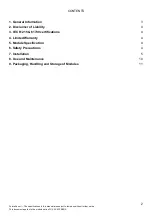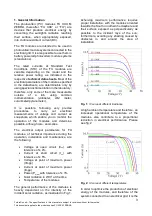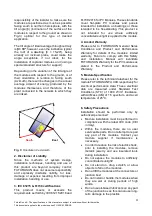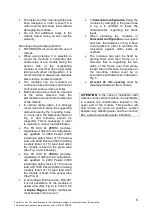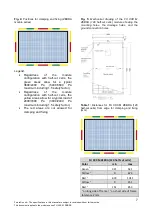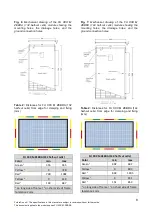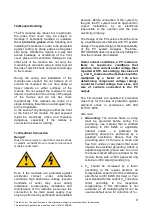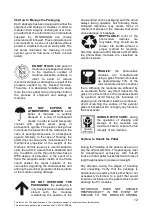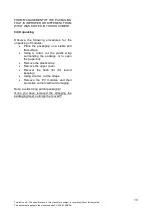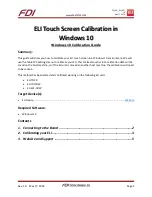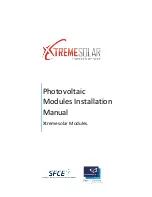
6
FuturaSun srl – The specifications in this manual are subject to revisions without further notice
This document applies to the module series FU XXX M ZEBRA
•
The distance of the mounting holes has
been designed in order to result in a
uniform wind and snow load without
damaging the module.
•
Do not drill additional holes in the
module frame; doing so will void the
warranty.
Mounting using clamping method:
•
FUTURASUN recommends the use of
clamps.
•
When using clamps, it is possible to
mount the modules in horizontal (the
shorter side of one module facing the
shorter side of the neighboring
module) or in vertical (the longer sides
facing each other) configuration. It is
recommended to always use stainless
steel clamps, screws and bolts.
•
The modules can be mounted on
continuous base structures (inclined or
horizontal) such as rails or similar.
•
Both base structures must be mounted
at the same distance from the
symmetrical axis (vertical or horizontal)
of the module.
•
In vertical configuration, it is strongly
recommended to place the supporting
elements nearby the mounting holes,
or in any case, the distances shown in
Fig. 4 and following should be
respected. This is necessary in order
to maintain a correct load distribution.
•
The FU XXX M ZEBRA modules,
regardless of half-cut cell configuration,
are qualified to 3600 Pascal (5400
including a safety factor of 1.5) in snow
load and 2400 Pascal (3600 including
a safety factor of 1.5) wind load when
the module is fixed in the green area
(See Fig. 4 and following)
•
The FU XXX M ZEBRA modules,
regardless of half-cut cell configuration,
are qualified to 2400 Pascal (3600
including a safety factor of 1.5) in snow
load and 1600 Pascal (2400 including
a safety factor of 1.5) wind load when
the module is fixed in the yellow area
(See Fig. 4)
•
In according with Eurocodes - EN 1991
it is not possible to fix the modules in
yellow area (See Fig. 4) in Zone 3,4,5
of
Alpine Region
. Shape coefficients
must be taken into account.
•
In
horizontal configuration
, fixing the
modules by clamping in the green area
in fig. 4 is certified to retain the
characteristics regarding the static
loads.
•
When clamping the modules in
horizontal configuration
on a support
structure, the distances in Fig. 4 have
to be applied in order to maintain the
resistance against static loads as
certified.
•
The modules can also be fixed by
placing them with their frame on a
structure that is supporting the two
sides of the frame over their whole
length. Also in this case, the position of
the mounting clamps must be in
accordance with distances indicated in
Fig. 4.
•
At least 20 mm spacing
must be
maintained between the modules.
ATTENTION
: in the case of installation with
modules in the vertical position, it is preferable
to maintain the Junction Box located in the
upper part of the module. This practice will
help reduce, as much as possible, contact
between any standing water and the Junction
Box, and avoid possible water infiltration.


